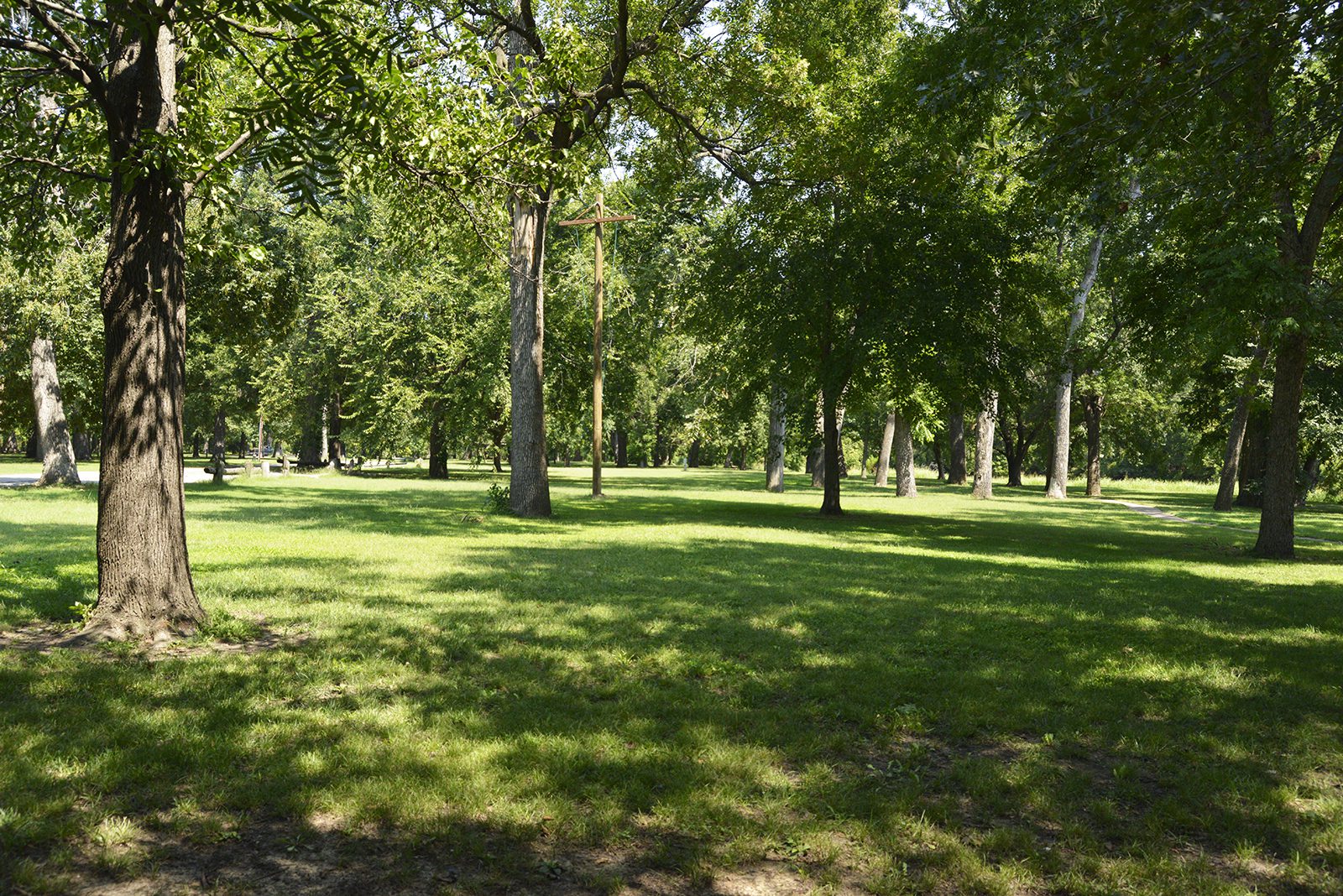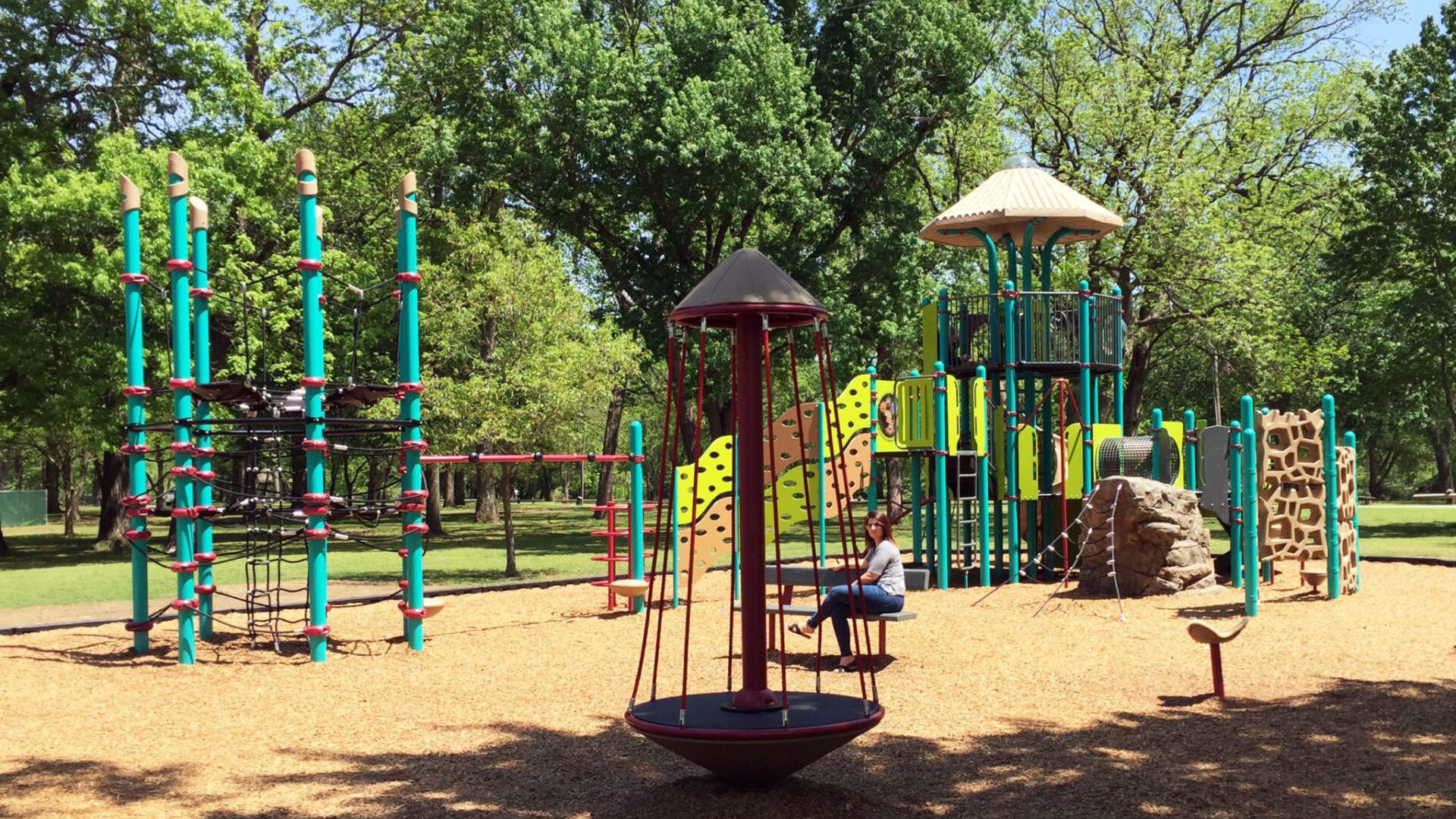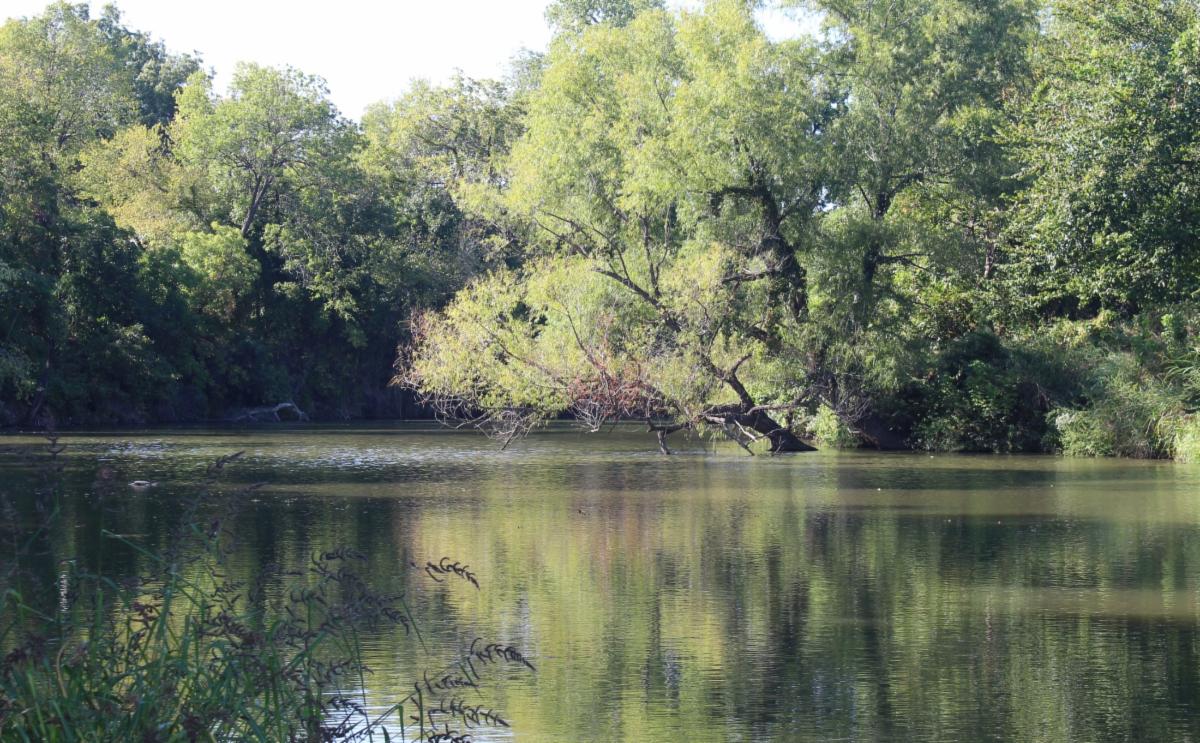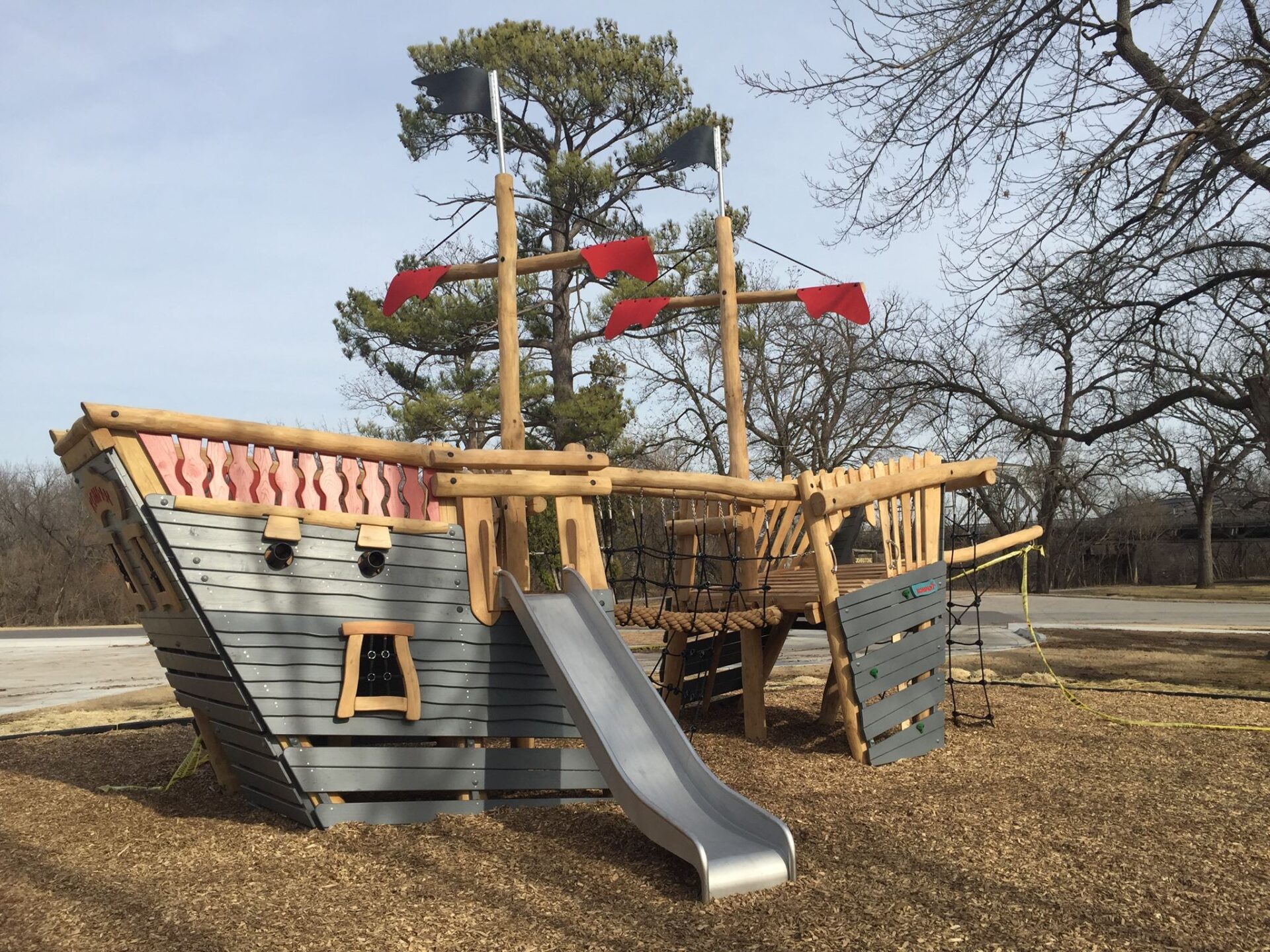JOHNSTONE PARK
Johnstone Park is the oldest park in the city of Bartlesville. Land for the 78.89-acre park was purchased September 11, 1903 – just six years after Bartlesville’s incorporation and four years before Oklahoma gained statehood. The river bend on which the park is located was originally the site of the Carr-Bartles Mill, a grist mill built by New York businessman Nelson Carr in 1870 and purchased by businessman and farmer Jake Bartles in 1877.
The Nellie Johnstone No. 1, the first commercial oil well in Oklahoma and named for the daughter of oilman William Johnstone, was drilled by William Johnstone, George Keeler, and Frank Overlees on current park land in the spring of 1897. The land was allotted to Nellie Johnstone in 1903, and production began that same year. A total of 100,000 barrels – approximately 4.2 million gallons – of oil were pumped from the well before it was plugged in 1948. By 1915, the now-married Nellie Cannon sold the land to the City of Bartlesville with the condition that a park be built and named after her father. The park quickly became a center for recreation and play for the citizens of Bartlesville. Today, a replica of the oil well stands at the site of the original rig.
FUN FACTS
- The remaining foundation stones of the Carr-Bartles Mill can be seen from the Diamond Jubilee Pavilion. The mill was built in 1870 by Nelson Carr, who sold the mill to Bartlesville and Dewey founder Jacob Bartles in 1875 for $1,000. The mill was the first business establishment in what is now Bartlesville.
- Johnstone Park is home to the largest White Ash tree in the state of Oklahoma.
- The Caney River, which runs through the park, was used in the early 1900s as a place to swim and bathe.
- A bridge located in the park and embellished with swastikas doesn’t symbolize what you might think (click here for more information).
PARK AMENITIES
- Three pavilions available for public use – City Center Pavilion, Johnstone Shelter, and Diamond Jubilee Pavilion. Please see the shelter reservation calendar to learn more about facility rentals.
- Two children’s playgrounds, including a Pirate Ship Playground
- Kiddie Park, a small children’s amusement park complete with merry-go-round, train, and miniature rollercoaster
- Splash pad
- Four lighted tennis courts (Please note that reservations for tennis courts are only available for major tournament play only.)
- Nellie Johnstone No. 1, a full-size replica of the first commercial oil well in what would later become the State of Oklahoma
- Picnic tables and benches
- Public restrooms
- Outdoor CrossFit equipment
- Pathfinder Parkway trailhead




